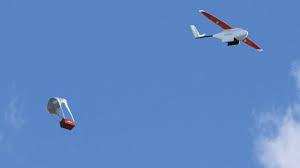Life from Above
On Christmas day in 2016 there was an invasion. Over 1.2 million people awoke to find ornately wrapped boxes from loved ones or “Santa” that contained gifts nearly 62 million Americans longed to receive: Drones.
Drone sales in the US hit over 2.5 million in 2016, nearly doubling sales of the unmanned aircraft in 2015. Even the FAA’s registration requirement had little effect on the 88% of people who say that drones look like a fun and interesting hobby. But what if they were more than that?
Commercial delivery and military applications for drones are well known, but a new start-up named Zipline made Forbes’ list of must watch companies based on their use of drones not in AV, but in… healthcare.

This wasn’t a total surprise. Last year, AV integrator Avidex, relayed how drones were helping organs reach patients in metropolitan areas where traffic congestion made it nearly impossible to transport them in a timely manner. Zipline’s model is slightly different, focusing on creating better access to medical care in remote areas.
According to Zipline:
“More than two billion people lack adequate access to essential medical products, often due to challenging terrain and gaps in infrastructure. Because of this, over 2.9 million children under age five die every year. And up to 150,000 pregnancy-related deaths could be avoided each year if mothers had reliable access to safe blood.”
Considering this, it’s not surprising that Zipline’s pilotless pilot program is in Rwanda, where they will deliver all of the country’s blood to its 20 hospitals and medical centers. They are looking at other countries they may be able to help as well, and their $85 million in investment capital all but guarantees these programs will have wings.
Zipline will deliver more than blood. They also plan to deliver medicines, vaccines, and medical devices and supplies. But what if they could also deliver a physician? Combining Zipline’s vision with an innovative Google X project, and you may be able to do just that.
“Project Loon uses high-altitude balloons placed in the stratosphere to create an aerial wireless network with up to 4G-LTE speeds with the idea of providing Internet access to the remaining 5 billion population. The balloons are maneuvered by adjusting their altitude in the stratosphere to float to a wind layer after identifying the wind layer with the desired speed and direction using wind data from the National Oceanic and Atmospheric Administration (NOAA). The system aims to bring Internet access to remote and rural areas poorly served by existing provisions, and to improve communication during natural disasters to affected regions.”
The implications here are obviously huge. A wireless device could be delivered by drone to a remote area, giving that population access to a medical professional via a video teleconference, facilitated on a wireless network floating in the sky.
The proper supplies could be delivered with video based instructions for the local administration of treatments. Regional epidemics could be addressed without compromising other populations and lives could be saved.
Expand these drone based services to medicines and medical devices and supplies, and drones have benefits even in the delivery of quality care to our own domestic, underserved rural communities as well.
Now to be fair, I’ve historically been a critic of widespread adoption of drones in AV for anything other than broadcast and content creation, but this may be a new use case.
Given all this, the cloud definitely has a silver lining when it comes to healthcare, thanks in great part to innovative companies like Zipline and Google X, who have the potential to deliver “life from above” on a large scale. The combination of being able to deliver needed supplies, as well as technology that may also provide access to a remote physician, make drones in AV in this application seem rather convincing after all.





